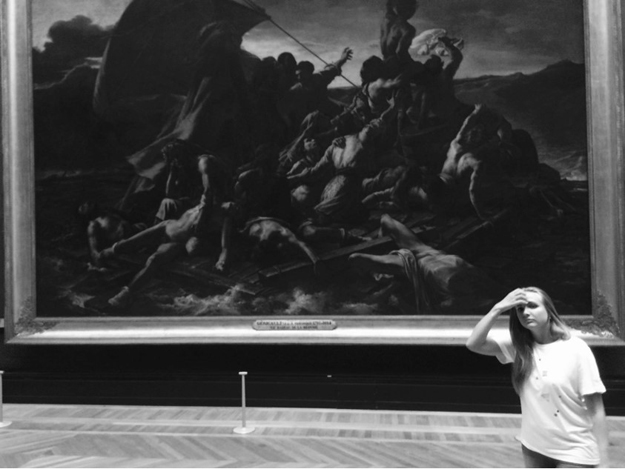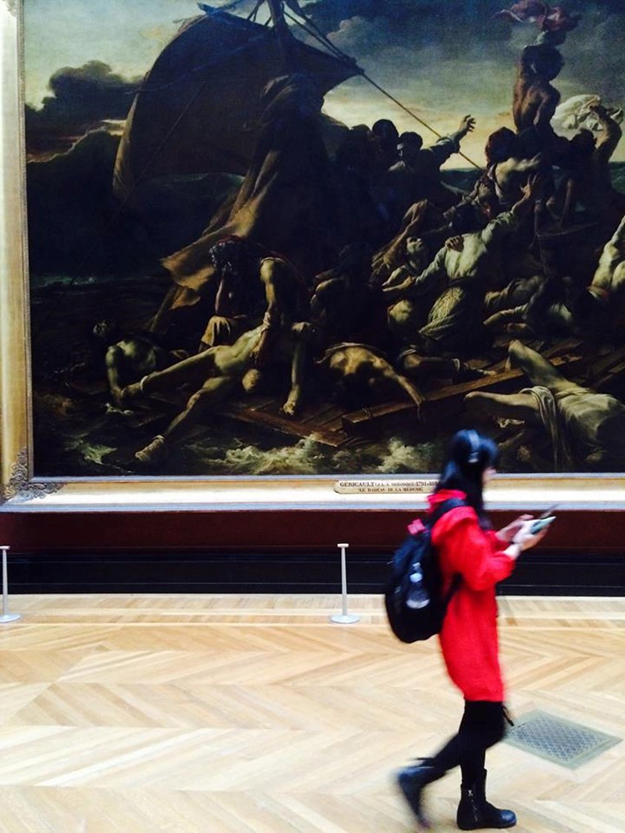War and Pieces of Canvas
Sandy Kinnee
December 2019
The primary effects of war are obvious. War is a tsunami that ripples across the cultural world for years.
Even if only combatants suffered and all else was untouched, things would be impacted. There have always been, amongst the dead and maimed, artists and craftsmen in the same percentage as they fall within any society. They are not singled out as a group, but I identify with them. The vast majority of these people were of an age where they were becoming painters, or writers, wood carvers, potters, or papermakers. Keep in mind: papermakers.
During war soldiers shoot at people with guns. Guns need bullets. Lead and copper are needed in vast quantities to make bullets. What are engravers to do without plates of copper to scribe and furrow into? Bavarian limestone is not war materiel. Neither was silk, until combat troops began jumping out of airplanes. Printmaking techniques evolved. Lithography, silkscreen, woodcut abounded to fill the need to make multiple images. Etching lines with nitric acid on zinc and steel plates grew from the lack of copper plates. This is not to say that there is a direct correlation between war and the invention of all printing techniques, but that lithography and the invention of the papermaking machine came about in the aftermath of both the French and American revolutions. The manufacture of paper in France had a setback due to the loss of skilled papermakers. The papermaking machine replaced the missing papermakers. At about the same time lithography was invented.
Neither lithography nor machine made paper, however, have anything to do with the size of artworks, meaning the scale of paintings, for my purposes. They are a response to the loss of skilled craftspeople and scarcity of copper. Painting on canvas was subject to the wartime use of canvas for sailing ships, tents, and duffle or kit bags. As the needs of war consumed canvas, painters had smaller bits of canvas upon which to create. If one stands in the Louvre and looks at the largest paintings made in the early nineteenth century, one can see that many canvases were comprised of narrow strips of canvas sewn together to make a large painting support. Weavers had also suffered losses during the wars and the first machine looms were of narrow width.
It is not all so simple, but if you look at the scale of paintings across time you find that artists work with what they can get their hands on and what they can afford. Only someone like Picasso seems to have had access to a large expanse of canvas during the build up to the Second World War. If he was any other artist, his gigantic Guernica may never have been painted. The rest of the art world had to make do with what wasn’t needed for the war effort, just as there was rationing of sugar and gasoline for the general population.
However, after the war, but not immediately, a delightful discovery for New York artists was made at the US Customs House:
An unclaimed hoard of wide Belgian linen was auctioned off at pennies on the dollar. New York Central Art Supply, where all the artists bought their paints, made the bolts affordable and available to their customers. Painters could and did take advantage of the large format paintings made possible.
Inexpensive canvas continues to be available today at bargain pricing, not due to any lack of armed conflict, but because ships don’t have sails and the vast majority of tents are now made of synthetic fabric and pup up when you need them.
Tomorrow I will drive to my studio, turn on the heater and flip the light switch. I will paint on my big chunks of cotton duck canvas, the same as used for sailing ships and army tents.
◊
Sandy Kinnee is yet another obscure artist who is an even more obscure writer/poet. Best known for his work with handmade paper since the early 1970s, he has for the past five years been exclusively painting fifteen foot canvases. He splits his time between Paris and Colorado. When in Colorado he paints. In Paris he writes because the apartment has no floor space for fifteen foot canvases.




